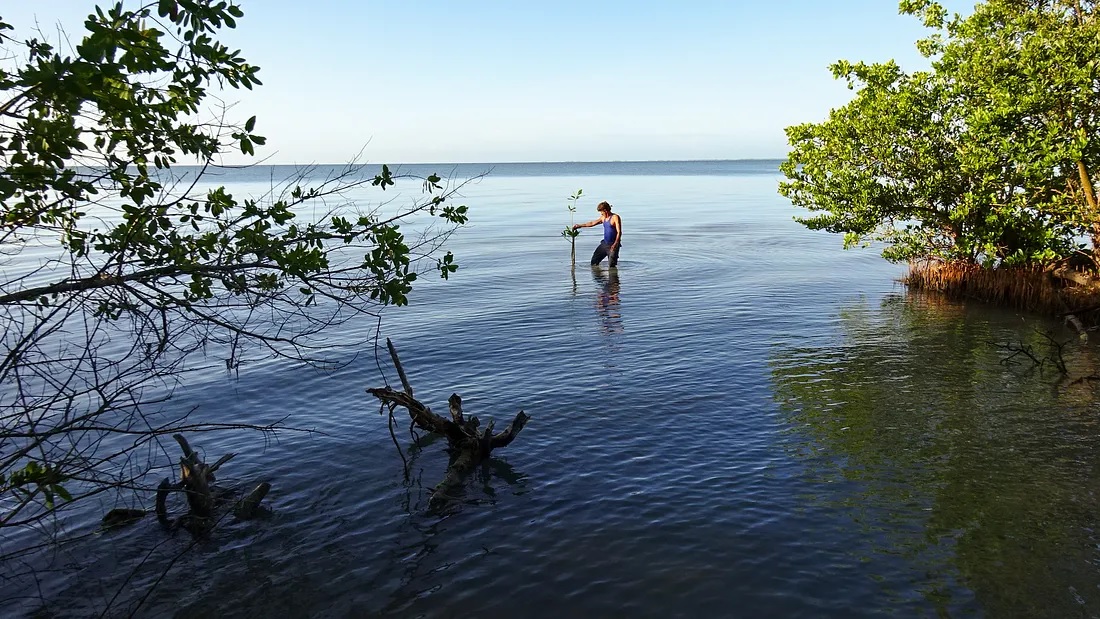Community innovation is central to addressing the climate crisis
Adaptation is local in nature
April 20, 2023

In Cuba, UNDP has supported the government in integrating ecosystem-based adaptation in coastal planning.
Several years ago, on a visit to a village in rural Zimbabwe, I met a small group of women with a story to share.
Having participated in a UNDP-supported adaptation project – including drought-resistant seeds and education in climate-smart agricultural practices – the women had significantly increased the productiveness of their home gardens.
However, what really caught my attention was how the women, seeing an opportunity to help one another and scale up their returns, had set up a peer group to pool their savings and invest on a revolving basis in each other’s other livelihood ventures (some agricultural, some not). In this way, they had essentially created an enterprising model to build on and sustain the investments of the project.
Local innovations such as this are key to meeting the challenges of the climate crisis.
The innovations we need span technologies, practices, business models and behavioural changes. These innovations are to be found at all levels, from national research institutions in the world’s biggest cities to small villages, like the one I visited in Zimbabwe.
At UNDP, we are focused on scaling up and accelerating innovative adaptation approaches that have been proven to be effective. Many of the 220 projects we have implemented around the world since 2008 have broken, and are breaking, ground in numerous ways.
In Thailand, for instance, UNDP is supporting the government in transforming agricultural practices by harnessing the power of the Internet of Things. In Mongolia, we are collaborating with herders to track livestock products from source to end to ensure sustainability. In Cuba, we have supported the government in integrating ecosystem-based adaptation with inter-sector coastal planning.
Supported by the Adaptation Fund and European Union, and in partnership with the UN Environment Programme and the Climate Technology Centre and Network (CTCN), the Adaptation Fund Climate Innovation Accelerator (AFCIA) aims to foster more innovation at the local level. The AFCIA funding window, managed by UNDP, was launched in 2021 and supports communities that are already responding to climate stresses in innovative ways.
Through the learnings from AFCIA, we aim to share lessons learned and best practices through an open platform called the Adaptation Innovation Marketplace, in which the International Centre for Climate Change and Development (ICCCAD), Global Resilience Partnership, Climate-KIC, UN Capital Development Fund (UNCDF), and Least Developed Countries Universities Consortium on Climate Change (LUCCC) are also founding members and key partners.
"At UNDP, we are focused on scaling up and accelerating innovative adaptation approaches that have been proven to be effective."
With the first round of US$2.2 million grant funding, the programme is supporting 22 organizations in 19 countries to foster and accelerate their adaptation ideas. The programme aims to develop more than 10 scalable innovative adaptation solutions, benefiting more than 175,000 people (at least 30 percent women), and supporting 2,200 hectares of land with restoration or regenerative agriculture.
Based on the progress reports from local partners, we are already seeing some impressive and scalable adaptation innovations.
For example, in Brazil, we are supporting a local partner to improve food security and protect the local ecosystem for indigenous people by introducing and expanding the production of acai berries. 115 hectares of land are now certified under sustainable agroforestry management, with 27 tonnes of acai berries processed and sold.
In Cambodia, 40 women are growing and selling crickets as an alternative food source, earning $2,600 for the first tonne of cricket farmed, a more adaptive product due to existing and future climate trends and one with year-round availability.
In Uganda, we are supporting a local partner that is teaching communities aquaponics technology through an innovative lease-to-own model to promote aquaponics and horticulture-related production. 2,600 aquaponic kits have been leased, and this local partner is now targeting an expansion plan of reaching $21 million of the local vegetable and fish market.
A second cohort of grantees is about to be announced, and we hope to provide another $2.5 million to local organizations across the globe, including approximately 10 micro grants of $60,000 and 13 small grants of $125,000.
Working with partners such as ICCCAD and the Global Resilience Partnership has allowed us to showcase the work of these AFCIA grantees and replicate their innovations in a broader network of networks. For instance, at last month’s Global Gobeshona Conference, we had the opportunity to learn from four local organizations – from the first cohort of grantees from the Innovation Small Grant Aggregator Platform (ISGAP) Programme – that are implementing solutions to build the resilience of women, youth, refugees and Indigenous communities in India, the Philippines, Uganda and in the Sahel (West Africa).
These examples are instructive. By identifying successful innovation solutions, and then scaling up and replicating them in other parts of a country or region, governments can save valuable time and money. By establishing or accelerating pilot projects and carefully monitoring their results, insights and best practices can be fed into policy processes, helping to scale up successful approaches.
Working together with partners, I am confident we will empower local communities and stakeholders to innovate and adapt, finding more solutions for resilience building.
We look forward to working with our current partners, and new ones, to scale the impact.

 Locations
Locations




